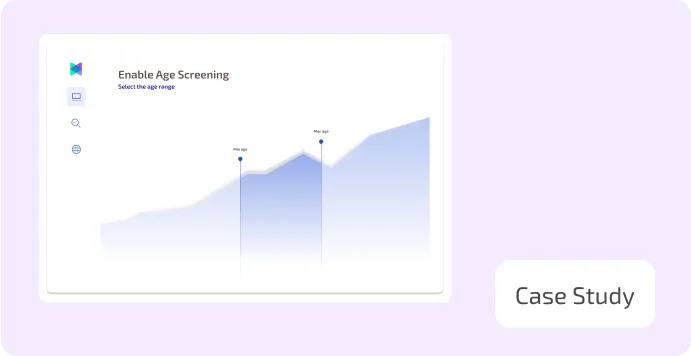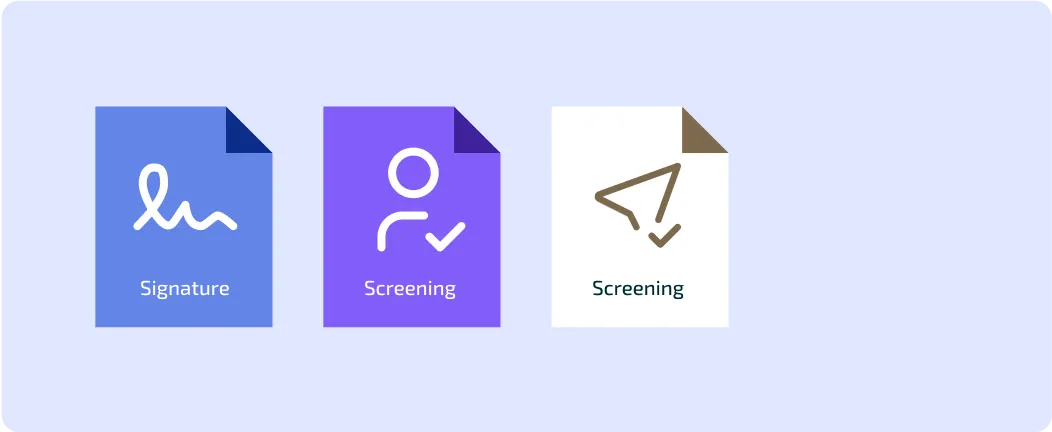.webp)
Published on
June 24, 2025
Customer and Transaction Risk Scoring in AML Compliance
.png)
Accelerate AML Compliance: Meet Regulatory Demands with 80% Less Setup Time
.svg)
.svg)
AML risk scoring is a method used by banks and financial institutions to assess the risk level of customers and transactions to prevent money laundering, fraud, and terrorist financing.
Each customer or transaction is given a risk score based on factors such as:
- Who they are (e.g., nationality, job, or business type).
- Where they operate (e.g., dealing with high-risk countries).
- How they transact (e.g., large cash deposits, frequent international transfers).
- If they have links to high-risk individuals or adverse media.
Customers are then classified as low, medium, or high risk, helping banks decide how much monitoring or investigation is needed.
Example:
XYZ Bank is onboarding a new business client, WestOcean Trading Ltd. During the AML risk scoring process, the system assigns the company a high-risk score, triggering a deeper review.
Step-by-Step Breakdown:
1. Customer Risk Assessment
- The company is registered in the British Virgin Islands (a known tax haven).
- The owner’s identity is unclear, making it hard to verify who controls the business.
- The company claims to import luxury goods, but its financial records don’t match its transactions.
2. Transaction Monitoring
- Large wire transfers from unrelated companies are received frequently.
- Funds are quickly transferred to offshore accounts in Panama and the Cayman Islands.
- Transactions are structured to avoid triggering alerts, a common red flag.
3. Enhanced Due Diligence (EDD)
A deeper investigation finds:
- The company’s director was previously linked to fraud cases.
- News reports suggest the company is involved in trade-based money laundering.
- It fails to provide valid invoices for its transactions.
4. Action Taken
- XYZ Bank closes the account due to high risk.
- A Suspicious Activity Report (SAR) is filed with regulators.
- Authorities later confirm that WestOcean Trading Ltd. was part of a global money laundering network.
Key Takeaways from AML Risk Scoring:
- Helps banks detect and investigate high-risk customers.
- A high-risk score leads to more checks and possible account closure.
- Risk scores change based on customer behavior and new information.
- Proper risk scoring helps prevent money laundering and financial crime.
Streamline Compliance: Achieve 80% Faster Setup for Fraud Prevention
.svg)
.svg)

How Aseel reduced onboarding time by more than 87% using FOCAL
Learn how FOCAL empowered Aseel to achieve new milestones.


Mastering Fraud Prevention: A Comprehensive Guide for KSA and MENA Businesses
51% of organizations fell victim to fraud in the last two years, don't be caught off guard, act proactively.


Featured blog posts

.png)
Customer and Transaction Risk Scoring in AML Compliance
Learn how AML risk scoring helps banks assess customers and transactions to detect money laundering and fraud, ensuring effective financial crime prevention.
.webp)
.png)
Customer and Transaction Risk Scoring in AML Compliance
Learn how AML risk scoring helps banks assess customers and transactions to detect money laundering and fraud, ensuring effective financial crime prevention.
.webp)
.png)
Customer and Transaction Risk Scoring in AML Compliance
Learn how AML risk scoring helps banks assess customers and transactions to detect money laundering and fraud, ensuring effective financial crime prevention.
.webp)





AI-Driven Precision in Fraud Risk and AML Compliance



.svg)
.png)





.svg)

_FastestImplementation_Small-Business_GoLiveTime.png)

_HighPerformer_Small-Business_HighPerformer.png)
_Leader_Leader.png)



%20(1).webp)